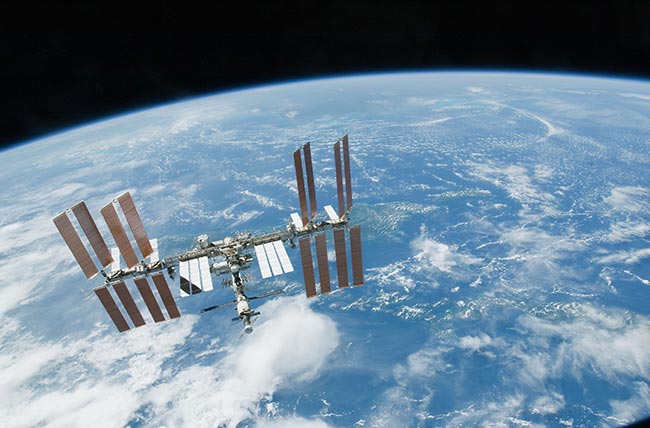
Life Existing Beyond Earth
Space station experimenting with life in space

Reggie Butler
The Signal
The International Space Station is approximately 200 miles away from earth. It’s crew members sacrifice their families, friends and comforts of home for the advancement of humankind.
The ISS is a spacecraft that has been flying in low-earth orbit since 1998. Currently hosting a six-person crew, the vehicle operates as a science laboratory built in collaboration with NASA, the Russian Federal Space Agency, the Japan Aerospace Exploration Agency, the European Space Agency and the Canadian Space Agency.
More than 400 science experiments have been conducted on the ISS thus far and there are hundreds more underway. These experiments research human health and exploration, technology testing, basic life and physical sciences, and earth and space science.
The science conducted in space is much different from the science done on Earth due to the environment.
“Micro-gravity provides an interesting working and operating environment in space,” said Jessica Calhoun, safety engineer for the ISS program. “On the earth, gravity is a huge attracting force of nature and it effects & influences everything. Properties of matter respond differently in a micro-gravity environment and the ISS gives us the opportunities to research and study these differences.”
Some experiments currently being done upon the ISS include spinal ultrasound testing to address the accuracy of MRIs, stem cell research in order to estimate space radiation effects on the human body, and the Robonaut that allows for an extended duration in space environments while completing tasks onboard.
“What we’re doing up there is a great adventure, but we’re also bringing things back to Earth,” said Edward Michael Fincke, astronaut, former commander of the ISS and UHCL alum. “The more we understand about life up there, the more we understand life down here. It makes life better.”
Crew members on the ISS spend approximately 6.5 hours a day working on various activities in addition to two hours of exercise a day to counter the effects of micro-gravity on their bodies. Every minute is scheduled including meals, sleep and personal time. The crew is usually off weekends and U.S. and Russian government holidays. On off days the crew spends their free time taking pictures of earth, relaxing and communicating with family via email and telephone.
The six-person crews rotate on and off the ISS every six months. The next few months will be especially busy for the ISS and the agencies involved. The events will begin with the current ISS commander for Expedition 34, Kevin Ford, and his two flight engineers, Oleg Novitskiy and Evgeny Tarelkin, making their journey home in mid-March.
Chris Hadfield will take over as ISS commander for Expedition 35 and will continue his journey on the ISS with his two flight engineers, Tom Marshburn and Roman Romanenko, until they fly home in May. To complete Expedition 35, three new crew members will arrive at the ISS in late March.
These crew members are human and have lives back here on Earth. They sacrifice themselves in order to further the science of humanity. For example, Fincke missed the birth of one of his children while he was on his first expedition to the ISS.
Fincke earned his second Master of Science in physical sciences (planetary geology) from UHCL in 2001.
“I want everyone graduating from UHCL to have the same feeling I’ve had of being lucky,” Finke said. “Whether it is getting on a space ship to go up to low-earth orbit or to get that dream job that they want, I want that feeling for everyone.”
Broadcast reporting by Veronica Lopez: The Signal. Video shooting and editing by Graham Clifford: The Signal.

[…] For more information about the International Space Station, click here to read The Signal reporter Reggie Butler’s article “Life Existing Beyond Ear… […]